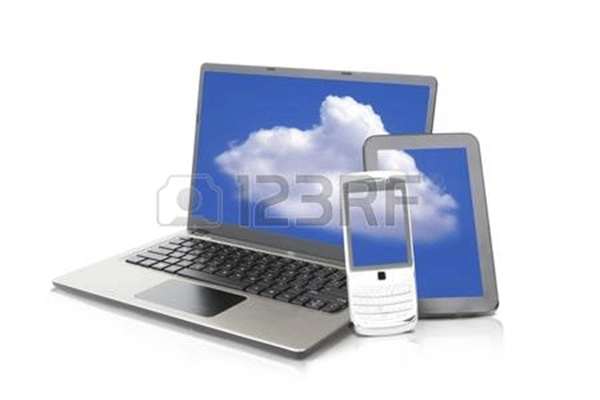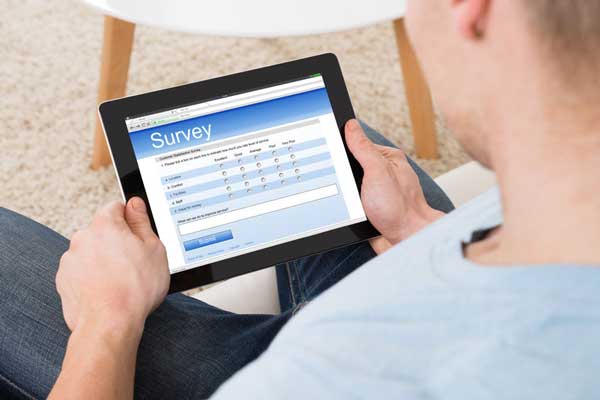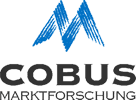Quantitative research methods
As an important instrument for the extraction of information in market research, we utilise quantitative analysis methods. Depending on the question posed those will be applied as the basis or as a complement of the project.
Our workers are particularly well trained as moderators or as interviewers and possess the essential know-how on analytical methods.

Telephone surveys may be conducted either quantitatively, computer-supported (CATI), or qualitatively with an open interview guideline. This decision depends on the question posed. Telephone surveys are particularly suitable for representative surveys, hardly accessible target groups and for the execution of interviews which do not require any model or product sample.
Prior to the project start, the appointed interviewers are personally trained for the particular project and assistance is given continuously during the field phase.
Highest data quality is fundamental for each of our analysis. Therefore we keep rigorous track of the data collection and continuously verify, as early as in the interviewing phase, the consistence and reliability of the data.
 Online surveys have nowadays become a widely spread research method. By means of online surveys, a great number of cases can be obtained in little time and relatively inexpensively. This instrument allows on the one hand the filtering of the survey course and on the other hand the depiction of images. Due to the level of equipment required including internet connections, online surveys are resorted to mainly in the B2B ambit, although also when the respondents are experts or professionals.
Online surveys have nowadays become a widely spread research method. By means of online surveys, a great number of cases can be obtained in little time and relatively inexpensively. This instrument allows on the one hand the filtering of the survey course and on the other hand the depiction of images. Due to the level of equipment required including internet connections, online surveys are resorted to mainly in the B2B ambit, although also when the respondents are experts or professionals.
Besides, visitors to the website can be encouraged, via a hyperlink on the homepage, to assess in an online questionnaire the performance of the company regarding specific services.
Our cooperation with the largest internet portal in Germany, web.de, enables us to reach almost all of the consumer groups.
Our online survey services:
- Conversion of the questionnaire to HTML format / Programming
- Adaptive filter functions and design of dynamic questionnaires
- Pre-testing on demand
- Export of data to a database
- Processing of survey data as SPSS / Excel files
- Data delivery
- Results report and screenshots on demand
Design of the user interface for online surveys:
- Grafical progress bar
- Embedding of graphics (logos, product images, test material)
- Compliance with CI guidelines (colours, logo utilization, etc.)
Safety aspects:
- Generation of individual access links for each respondent and automated forwarding of notification emails
- Forwarding of email reminders
- Reporting about inconsistent email addresses
- Support in case of backward navigation and for technical questions
- Data protection against interruptions, abortion of the survey
Brands and copyright legislation must be taken into account if using logos etc. Specific forms of non-response (inconsistent email addresses, out-of-office) are reported separately.
Our online surveys meet all the specific anonymity and data security requirements.
 In Paper & Pencil surveys, the respondent is given a hard copy of the questionnaire, which is then manually filled in and sent, using an already post-paid envelope with our address written on it, to COBUS (Self-filler). Besides this alternative (without interviewer) some others exist where the interviewer conducts the survey directly in the test studio or at POS (street surveys).
In Paper & Pencil surveys, the respondent is given a hard copy of the questionnaire, which is then manually filled in and sent, using an already post-paid envelope with our address written on it, to COBUS (Self-filler). Besides this alternative (without interviewer) some others exist where the interviewer conducts the survey directly in the test studio or at POS (street surveys).
Due to its highly costly nature, Paper & Pencil surveys are nowadays generally carried out only if the target group is not reachable by other means without introducing distortions.
Often, surveys online and on paper are simultaneously implemented if only part of the target group has an internet connection at their disposal, e.g. on surveys among customers and professionals.
 We use this modern Paper & Pencil surveys on research at the POS or trade fairs. Our trained interviewers conduct surveys using mobile PDA devices in shopping centres, department stores, university campuses, train stations, trains, etc.
We use this modern Paper & Pencil surveys on research at the POS or trade fairs. Our trained interviewers conduct surveys using mobile PDA devices in shopping centres, department stores, university campuses, train stations, trains, etc.
In comparison to the classic Paper & Pencil surveys the CAPI has even more advantages:
- Error reduction due to the application of automatic filtering
- Error reduction due to the export of data in SPSS (no manual data entry)
- Better response towards the respondent, as cumbersome turning over of pages is discarded
- It is possible to show photos to the respondent
- Live audio recordings (“Verbatims”) may be taken
- The time and duration of the interview is accurately traceable
- Quicker data export and analysis
Using PDA devices can increase the quality of the survey results substantially.
 Objective information about the quality of the own service performance is not easy to obtain. Precisely with regards to outsourced services, businesses are mostly not informed about their actual status, as opposed to their own customers. Oftentimes, customer expectations (even in the service area) remain at least partially unfulfilled. Especially in the current times, a periodic verification of the customer satisfaction via surveys to customers is insufficient. An additional verification by means of mystery research is useful.
Objective information about the quality of the own service performance is not easy to obtain. Precisely with regards to outsourced services, businesses are mostly not informed about their actual status, as opposed to their own customers. Oftentimes, customer expectations (even in the service area) remain at least partially unfulfilled. Especially in the current times, a periodic verification of the customer satisfaction via surveys to customers is insufficient. An additional verification by means of mystery research is useful.
The goal of mystery research in this context is to deliver an honest evaluation of the situation on the factual status quo in the customer interface. In order to obtain valid and objective information there is a whole series of methods available, from mystery calls to mystery shopping via mystery letters and mystery emails.
Mystery analyses are well suited for the derivation of employee training actions in order to subsequently check the implementation and effectiveness of these actions. They also serve as a Benchmarking-Tool – even without the agreement of the company in question – by which competing vendors may be studied.
In order to assure objectivity and comparability in connection with mystery research, attention must be paid that the testers conducting a mystery analysis remain unnoticed under all circumstances.
We also can resort to our COBUS-Tester-Pool, since the deployment of experienced professional testers who uniformly adhere to meticulously defined guidelines is indispensable for an execution of the tests of high qualitative value. In order to minimise as much as possible the influence of the interviewer on the test setting and therefore on the test results, each test in a research project is carried out by a different tester. Furthermore, the sociodemographic attributes of the test person must satisfy the test contents and the customer profile, so that the situation created can be managed under realistic conditions and, above all, it also remains believable.
In order to guarantee a homogeneous and standardised extraction of information the survey protocol must contain a precise reference manual with detailed assessment guidelines with no room for interpretation. In consequence, the survey protocols contain generally only closed questions. It is only for purposes of the description of disrupting factors or exceptions in the test situation that open annotations are used.
